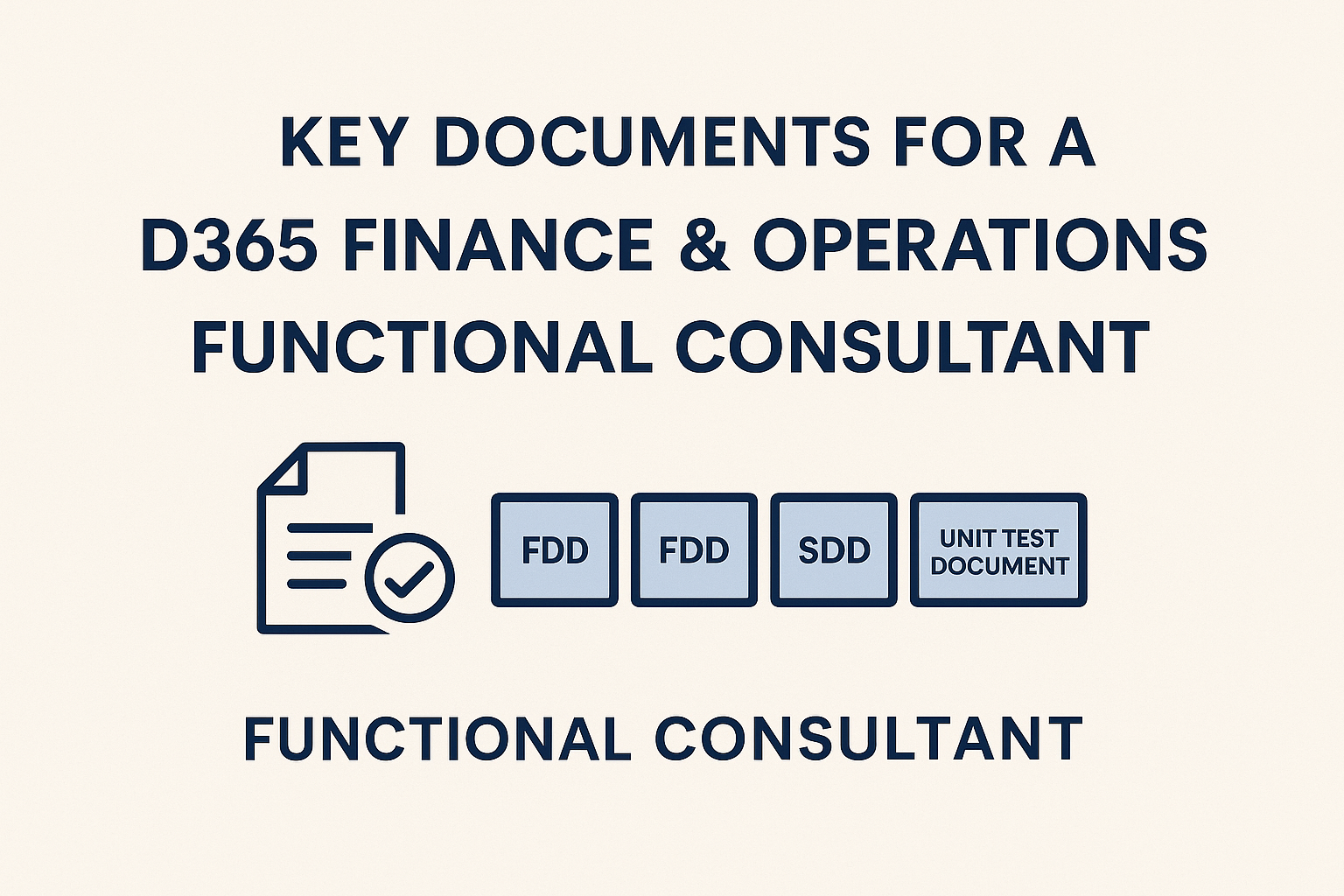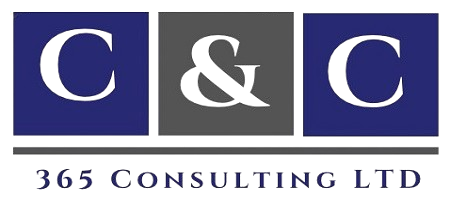Key Documents Every D365 Finance & Operations Functional Consultant Should Know
- September 26, 2025
- Posted by: Christian Ngah
- Category: Christian Ntanyele Ngah

Key Documents Every D365 Finance & Operations Functional Consultant Should Know
Documentation is the backbone of any successful Dynamics 365 Finance & Operations (D365 FO) project. Whether you’re gathering requirements, designing solutions, or testing configurations, the right documents keep everyone on the same page and reduce costly misunderstandings. In this article, we’ll break down the most important documents you’ll work with, why they matter, and how they fit into a project lifecycle.
Functional Requirements Document (FRD)
The FRD is where it all begins. It captures what the business needs – processes, business rules, inputs and outputs, and any special conditions. Think of it as translating stakeholder conversations into a clear, structured document.
Real-world example: Imagine a retail company wants to automate its purchase requisition approval process. The FRD would capture rules like “any requisition above £5,000 must go to the finance manager for approval” and list all possible cost centers and approvers. This ensures nothing is missed before design starts.
Why it matters:
- Acts as the single source of truth for what needs to be built
- Forms the baseline for design, development, and testing
- Provides sign off from the business before moving forward
Microsoft recommends linking requirements directly to business processes to avoid gaps or rework. Read Microsoft’s guide on defining requirements.
Functional Design Document (FDD) & Solution Design Document (SDD)
Once you know what the business wants, it’s time to document how you’ll deliver it.
- FDD: Describes the solution from a functional perspective – process flows, forms, validations, data fields, and logic.
- SDD: Often more technical, covering architecture, data structures, and integrations. Sometimes combined into a single Functional & Technical Design Document.
Real world example: In the same purchase requisition scenario, the FDD would show the workflow steps, which fields are mandatory, and any email notifications. The SDD would detail the integration with the HR system to fetch approver names.
Why they matter:
- Serve as the blueprint for developers and configurators
- Allow stakeholders to validate the solution design before build
- Help reduce rework by aligning expectations early
Microsoft offers a recommended template for combined design documentation. See the official guidance here.
Test Documents: Unit Tests, Functional Tests, and FAT
Testing is where theory meets reality. Well written test documents ensure your solution works as intended.
| Document | Purpose | Owner |
|---|---|---|
| Unit Test Document | Tests individual pieces of logic or configuration | Developer / Functional Consultant |
| Functional or System Test Cases | Validate end to end business scenarios | Functional Consultant / Test Team |
| Factory Acceptance Test (FAT) | Simulate real life scenarios to confirm readiness before go live | Business Users & Consultants |
Real world example: Before go live, the business might execute a FAT where they create real purchase requisitions, route them for approval, and verify that budgets, notifications, and posting rules all work as expected.
Microsoft provides a detailed overview of testing strategies. Read more about test types.
Why they matter:
- Catch defects early before they impact production
- Give stakeholders confidence that requirements have been met
- Provide documented proof of what was tested and approved
Best Practices for Documentation
- Keep it traceable: Map each FRD requirement to design elements and test cases.
- Collaborate early: Get stakeholders involved before finalising documents.
- Use consistent templates: Makes documents easier to follow and review.
- Iterate and update: Documentation should evolve as requirements become clearer.
FAQs
Do we always need all these documents?
Not necessarily. Smaller projects may combine some of these documents, but skipping them entirely can lead to confusion and rework.
Can FDD and SDD be merged?
Yes, many teams create a single combined Functional & Technical Design Document, which Microsoft also recommends.
Who writes these documents?
Functional consultants typically own the FRD and FDD, while architects and technical leads contribute to or own the SDD. Test cases are often a joint effort between consultants and QA teams.
When should test cases be written?
As soon as requirements are clear. Writing them early ensures coverage and avoids last minute surprises.
How do we get business buy in?
Review documents with business users, run workshops, and get formal sign off before build and before go live.
Final Thoughts
Good documentation is like a project’s GPS – it guides everyone in the right direction and keeps you from getting lost. As a D365 functional consultant, mastering these documents will make your projects smoother, your clients happier, and your implementations far more successful.
